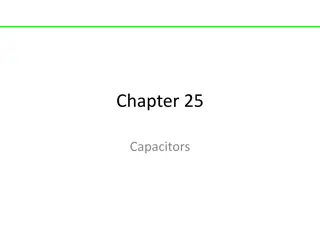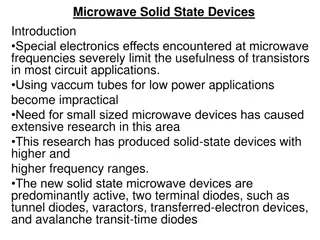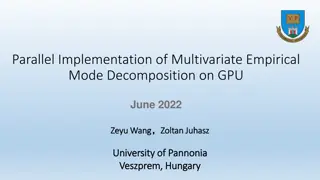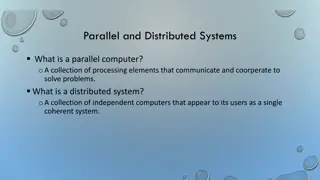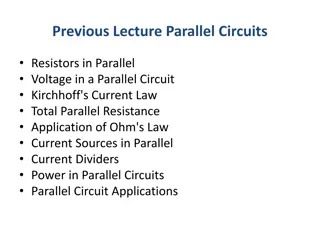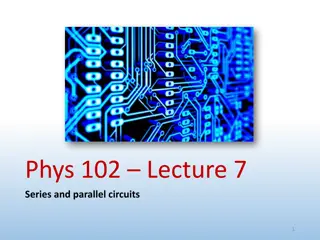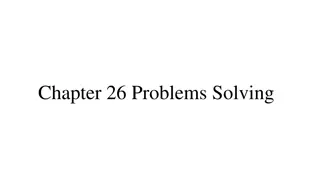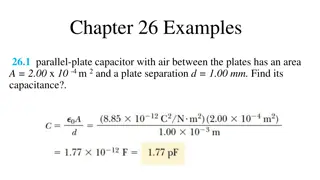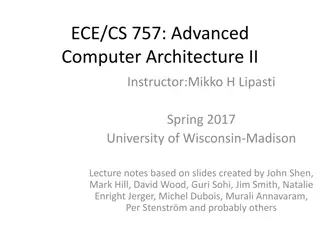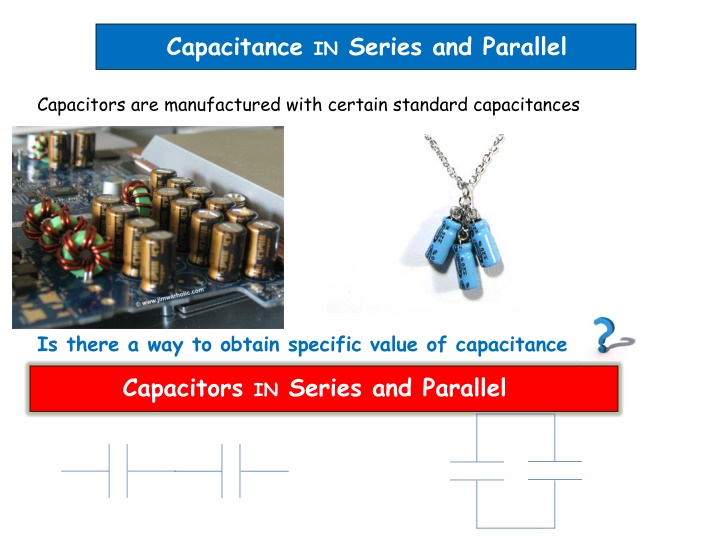
Capacitance in Series and Parallel Circuits
Learn how to calculate equivalent capacitance in series and parallel circuits using standard capacitance values. Understand the intuitive concepts and solve examples to deepen your understanding.
Download Presentation

Please find below an Image/Link to download the presentation.
The content on the website is provided AS IS for your information and personal use only. It may not be sold, licensed, or shared on other websites without obtaining consent from the author. If you encounter any issues during the download, it is possible that the publisher has removed the file from their server.
You are allowed to download the files provided on this website for personal or commercial use, subject to the condition that they are used lawfully. All files are the property of their respective owners.
The content on the website is provided AS IS for your information and personal use only. It may not be sold, licensed, or shared on other websites without obtaining consent from the author.
E N D
Presentation Transcript
Capacitance IN Series and Parallel Capacitors are manufactured with certain standard capacitances Is there a way to obtain specific value of capacitance Capacitors IN Series and Parallel
Capacitance IN Series a Q C = = + + + + - - - - V V +Q -Q Vac=V1 C1 1 ac 1 Vab=V c Q C + + + + - - - - = = +Q -Q V V Vcb=V2 C2 2 cb 2 b 1 C 1 = = + = + V V V V Q 1 2 ab C 1 2 1 C 1 V Q = + C 1 2
The combination can be replaced by a equivalent capacitance Ceq Q V 1 C = C eq 1 V Q = + C + + + + 1 2 +Q -Q V Ceq 1 1 C 1 - - - - = + C C 1 2 eq In general for any number of capacitors in Series 1 1 C 1 1 = + + + ...... C C C 1 2 3 eq Note: Magnitude of charge on each capacitor is the same, however potential difference can be different V=V1+V2+V3+
Capacitance IN Parallel a + + + + + + + + C2 Q2 C1 Q1 Vab=V - - - - - - - - b The charges are Q CV = = Q C V 2 C V 2 1 1 = + = + ( ) Q Q Q C 1 2 1 2 + + + + Q V Q V = + = Ceq C C C + Q=Q1+Q2 1 2 eq C - - - - = C C 1 2 eq In general for any number of capacitors in parallel C C C = + + + ... C 1 2 3 eq
Intuitive understanding Using the plate capacitor formula we derive the equivalent capacitance intuitively ? =??0 Parallel plate capacitor ? Two identical plate capacitors in series means effectively increasing the d +Q +Q -Q -Q d equipotential d +Q -Q 1 =2? ??0 =1 ?+1 ??? ? d d
Intuitive understanding Two identical plate capacitors in parallel means effectively ? =??0 increasing A in ? +Q -Q +Q -Q d d equipotential A A A A +Q +Q -Q -Q d d ???=2??0 = ? + ? ?
Clicker Question The three configurations shown below are constructed using identical capacitors. Which of these configurations has lowest total capacitance? C B A C C C C C 1 Ctotal= 1 C+ 1 C = 2 C Ctotal= 2C Ctotal=C Ctotal=C 2 212H: Capacitance and Dielectric Electricity & Magnetism Lecture 8, Slide 7
Example C2 C1 V C3 (a)Determine the equivalent capacitance of the circuit shown if C1 = C2 = 2C3 = 12.5 F. (b) How much charge is stored on each capacitor when V = 45.0 V? Middle Branch: 1/Ceq = 1/C2 + 1/C3 1/Ceq = 1/12.5 F + 1/6.25 F Ceq = 4.16667 F Combine parallel: C = C1 + Ceq C = 12.5 F + 4.1666667 F = 16.6667 F Voltage over each parallel branch is same as the battery: C1: 45.0 V Q1=C1V= 12.5 F 45V= 562.5 C Ceq: 45.0 V Series: V=V2 + V3 = q/C2 + q/C3 = q/Ceq q = CeqV q = (4.166667 F)(45V)= 187.5 C C2: V = q/C = 187.5 C/12.5 F = 15 V C3: V = 187.5 C/6.25 F = 30 V Check result: V=V2 + V3=15V+30V=45V
Energy storage in Capacitors Q C -Q +Q = V At an intermediate time (t<tcharged) q is the charge v is the potential difference V=Va-Vb Work dW required to transfer an additional charge dq qdq dW vdq = = Vb Va C The total work W required to increase capacitor charge from 0 to Q 1 W dW qdq C We define potential energy of an uncharged capacitor to be zero then W is equal to potential energy U 1 2 2 C Q W 2 Q = = = 2 C 0 0 2 1 2 Q = = = 2 U CV QV
Electric field energy We derived the various forms of electric potential energy stored in a capacitor If we think about charging a capacitor by moving charge from one plate to the other that requires work against the electric field 2 1 2 1 2 Q = = = 2 U CV QV 2 C We can think of the energy being stored in the electric field ? ??=??2 ? =1 With we can introduce the energy density ? = 2??2 2?? Using the parallel plate capacitor expressions ? = ?? and ? =??0 ? Vacuum is not truly empty space but can have energy energy density ? =??0?2?2 =1 2?0?2 2??2

